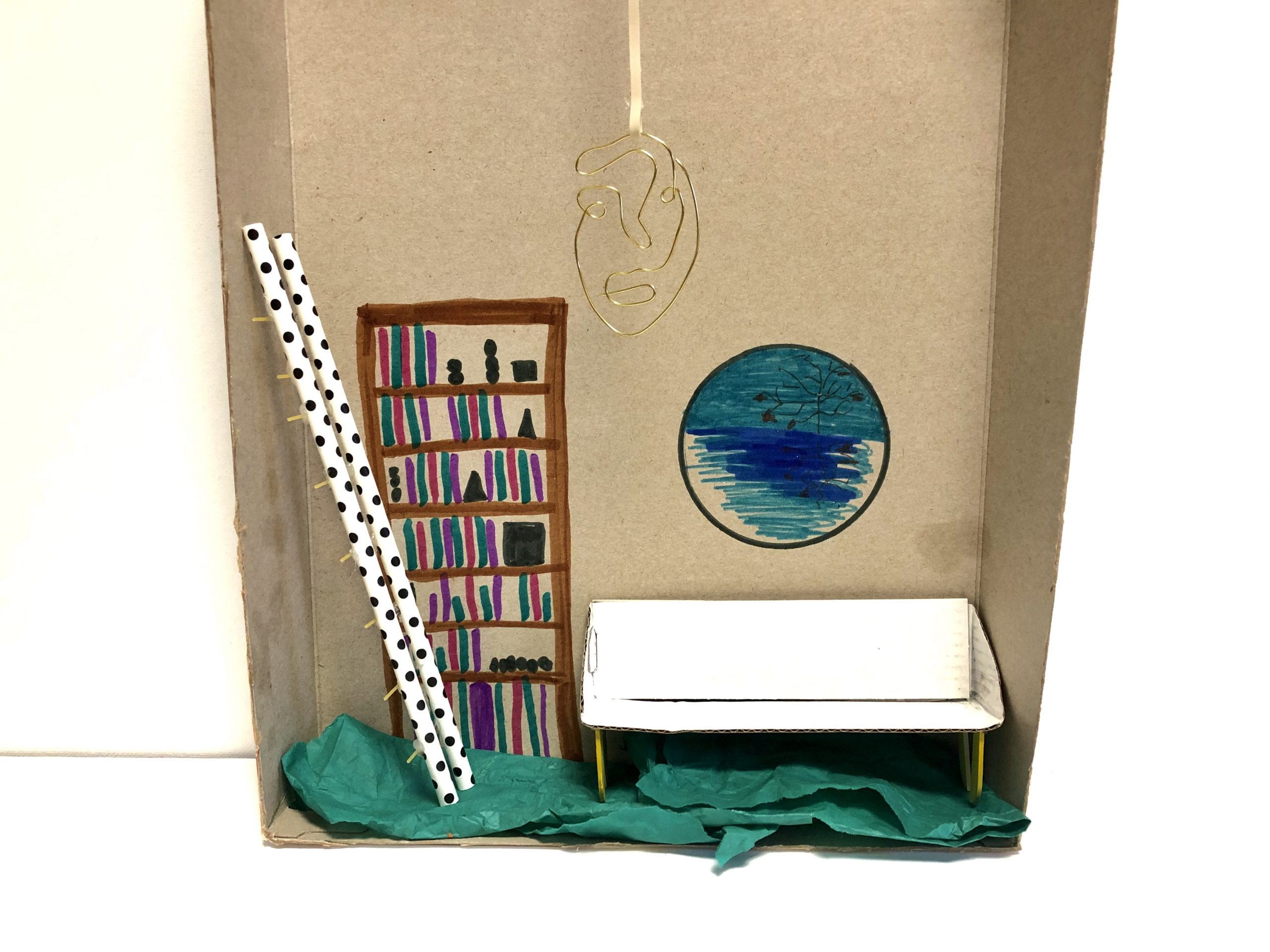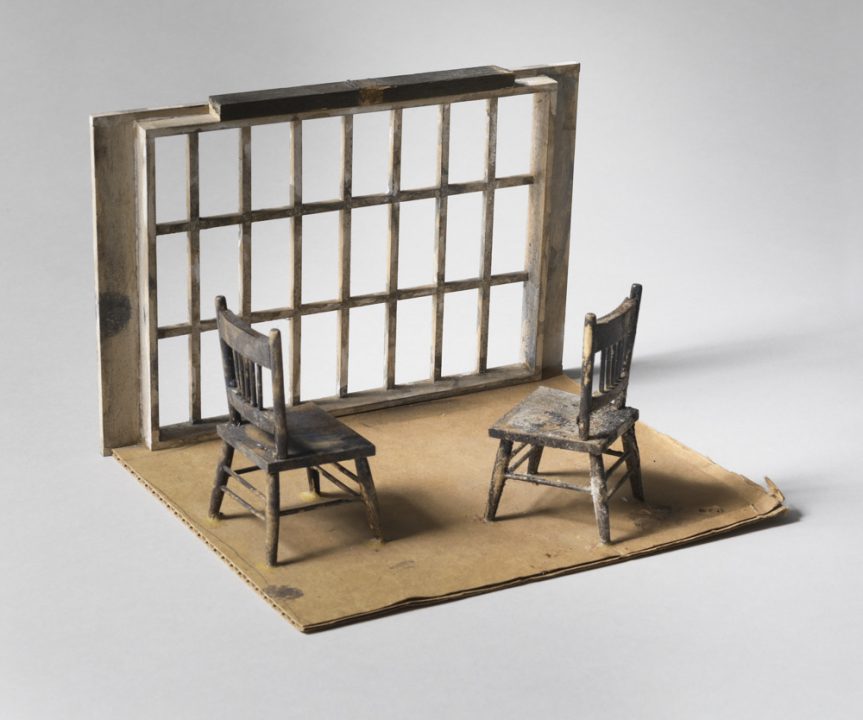Think Inside the Box

Transform a box into a unique space inspired by Siah Armajani!
We want to see your creations! Share on social media @hirshhorn with #HirshhornInsideOut.
Time: 45–60 minutes
Skill Level: Advanced
Topic: Building and Design
LOOK CLOSELY
Look closely. What do you see? Describe the materials, space, and what’s inside.

Siah Armajani, Picture Window with Two Chairs, 1974-1975. Hirshhorn Museum and Sculpture Garden, Smithsonian Institution, Washington, DC, Gift of the Artist in Honor of James T. Demetrion, 1994.
Take a look at the artwork from a different angle. What do you notice now? How do you think this was made?

Siah Armajani, Picture Window with Two Chairs, 1974-1975. Hirshhorn Museum and Sculpture Garden, Smithsonian Institution, Washington, DC, Gift of the Artist in Honor of James T. Demetrion, 1994.
This artwork, which is called Picture Window with Two Chairs, by the artist Siah Armajani, was made using wood, paint, and cardboard. Notice how the picture window creates the feeling of a room, even though all other sides are open. Two empty chairs sit facing each other. This sculpture is very small, sized like a doll house, at 5 ⅜ inches long, 8 inches wide, and 6 ⅝ inches high—about the size of a bunch of bananas.
Do you have ideas that you are passionate about and want to share with people? Meet Artist Siah Armajani. Armajani (1939–2020) was born in Tehran, Iran, and was part of a very educated family. He immigrated to the United States when he was 19 years old and studied philosophy and art at Macalester College in St. Paul, Minnesota, where his uncle was a professor.
Armajani began making artwork in the late 1950s. He made many different types of art including sculpture and collage, and is best known for his large-scale public art and architecture projects such as the major Irene Hixon Whitney bridge in Minneapolis. He used math, science, and technology to express ideas that he did not feel could be adequately expressed using paint and canvas. From 1974 to1975, Armajani worked on a “Building” series which included more than a thousand small-scale structures focused on creating houses with open space. Picture Window with two Chairs is part of the “Building” series.
See other works by Siah Armajani in the Hirshhorn collection.
MAKE IT!
Taking inspiration from artist Siah Armajani’s sculpture Picture Window with two Chairs, create your own architectural sculpture.
- Hunt for a box. Look for a recycled box, like an old food container or shoe box. Think about how the box’s size impacts the type of space you want to create. For our model project, we chose a cereal box which has a structure that is both cozy and tall.

- Gather your materials. You’ll need:
- Scissors
- Sturdy materials such as cardboard or popsicle sticks. Cardboard tubes or inserts from shipping boxes can create great furniture and architectural details.
- Kinetic, bendy materials such as wire, pipe cleaners, straws, or string. Kinetic means that something is “of or relating to motion.” Kinetic art is art that moves!
- Materials to help hold it all together, such as tape or glue

- Explore your materials. Can they stand on their own? Can you alter them by folding or bending? How can attaching two or more materials together create new possibilities for your structure?

- Make a plan! Grab some paper and drawing materials, and sketch your ideas. What type of space do you want to create? Think about different ideas for transforming your box with the materials you’ve chosen. Note: Younger children (under six) may do best skipping this step and continuing to explore materials and build their structure.

- Transform your box. Think about how to want to display the space you create. Use your scissors to create an opening for viewing. For our model project we chose to cut off the front of our box. Look back at Picture Window with Two Chairs and notice how open Armajani chose to keep his work.

- Construct your space and its contents. Use your materials to alter or add to your box. For our model project, we cut and glued popsicle sticks to a piece of cardboard to make a couch, glued broken spaghetti pieces to straws to make a ladder, and bent and hung wire from a cut rubber band to create a hanging sculpture.

- Decorate! You might use markers, paint, or other decorative materials to enhance your space or its contents. For our model project, we chose to draw directly onto the box surface with markers. Continue constructing and transforming until you are happy with your creation. Younger artists may want to play with their creation. Add in minifigures or toy animals to encourage pretend play.

- Title your work! We titled our project Pandora’s Oasis. Our title is a play on the ancient Greek myth of Pandora’s Box, a tragedy in which Pandora’s curiosity overwhelms her and she opens a forbidden box. After you finish your project, check out the myth with an adult to learn how Pandora’s story ends.
